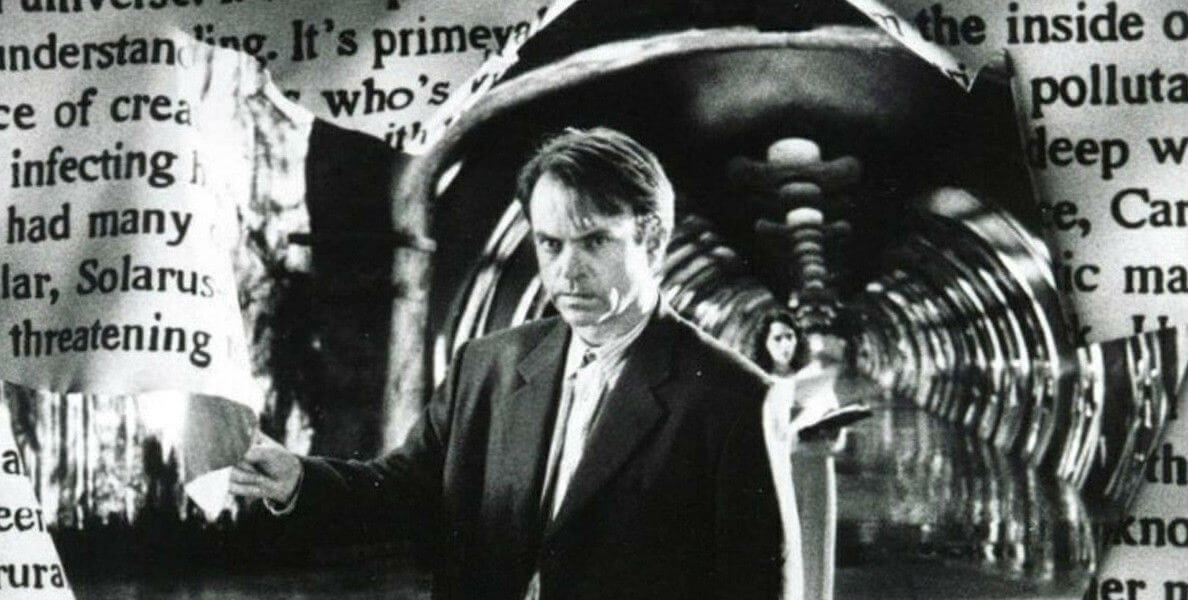In the Mouth of Madness [1994] is the masterpiece directed and scored by John Carpenter. When a publishing company’s best-selling horror novelist goes missing on the eve of his latest book “In the Mouth of Madness”, insurance investigator John Trent (Sam Neill) is hired to determine the legitimacy of their claim. John is accompanied by the novelist’s editor, Linda Styles (Julie Carmen), as they travel to a supposedly supernatural town in New Hampshire where he believes Sutter Cane may be hiding.
Homage to Horror. Carpenter’s themes and narrative are transparently meta — an honorable tribute to the horror auteurs that came before him such as H.P. Lovecraft and Stephen King. The Character of Sutter Cane is very much an amalgamation of these two brilliant authors and his manipulation of people through art is suggesting the power and influence of art. As well as respecting those before him, Carpenter also analyses his own career in pulp horror through a retrospective lens. The film supposes a world where a single person is responsible for the fate of the world because he is creating it; this is not a biblical allusion, but an allusion to the relationship between the artist and art.
Cut and Slash. The standout difference of the film from all of Carpenter’s others is the use of editing. The film cuts like a music video — there are montages of quick rapid-fire cuts to heighten the nightmare within a nightmare aspect. It is jarring in a way that can only work in masterful horror film-making. The opening of this film is a quick-cut montage of a printing press to a heavy rock soundtrack that sounds like Carpenter’s version of “Enter Sandman.” Somehow Carpenter manages to make a film — unlike anything he has ever done before — and yet it is pulled off in a way that is undeniably his own.
Flawed? I expect that people may not entirely understand this movie upon first viewing. They may not realize that the trashy melodrama is very thoughtful and deliberately used. They also might not catch the seemingly flat cinematography of Kibbe as actually quietly nuanced (and Carpenter’s best use of him). Inevitably people will call the special effects fake and dated, but in comparison to the CGI landscape of modern films, it is still probably more tactile than any film of the last decade.
This is not reality, but it’s a damn good film.

Watch In The Mouth of Madness now
